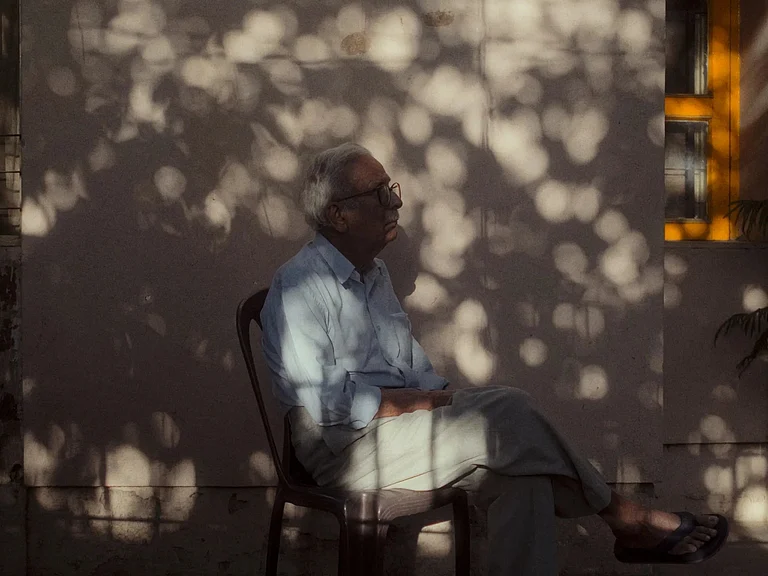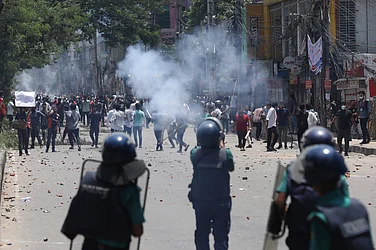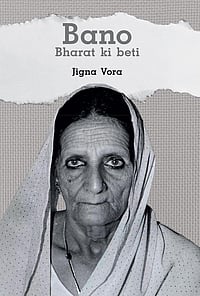The sight of two statues of Mahatma Gandhi — at Lenin Chowk near Langat Singh College in Bihar’s Muzaffarpur — as well as of the two revolutionaries, Khudiram Bose and Prafulla Chaki, who had attempted to kill the unpopular British judge in 1908, in front of the residence of the District Judge, made perfect sense to me as a student. However, in the 1990s, a statue of Maharana Pratap, the 16th-century ruler who challenged the authority of the Mughal Emperor Akbar, was installed all of a sudden on the busiest crossroad of a market-town — Lalganj in Vaishali, the erstwhile district of Muzaffarpur in Bihar, less than 50 km away from Patna.
This was a little puzzling for me. Why was Maharana Pratap’s statue installed in Bihar of all places? It may be noted that the Shukla (Sukul) families of the Bhumihar community, in the vicinity of Lalganj, had produced some noted freedom fighters. Yogendra Shukla (1896-1960), who came from Jalalpur, a village near Lalganj, was associated with Bhagat Singh and was one of the founders of the Hindustan Socialist Republican Association (HSRA), for which he had served in the Andaman’s Cellular Jail during 1932-37. By 1940, he became closer to the Congress Socialist Party and to Jaya Prakash Narayan (1902-79). He then became an underground revolutionary during the Quit India Movement (1942). His nephew, Baikunth Shukla (1907-34), was hanged till death for having killed Phanindranath Ghosh, the hostile approver against Bhagat Singh, as Nand Kishore Shukla writes in The Trial of Baikunth Sukul: A Revolutionary Patriot (Har Anand, 1999).
Thus, had there been a statue of the Shuklas (Sukuls) at the crossroads of Lalganj, it could have been easily comprehensible. A different choice, by the gangster-politicians, made me inquisitive about the politics of erecting statues in commemoration of certain heroes. As I attempted to comprehend this, I came across a recent history of caste-based political equations.
The Lalganj Assembly constituency in Bihar’s Vaishali is a sort of pocket-borough of Munna (Vijay) Shukla, a Bhumihar “don”, from where he and his wife have been elected to the Bihar assembly several times. Munna Shukla was elected as an MLA from Lalganj in 2000 as an independent candidate and in February 2005, as an LJP nominee, when the Assembly could not be formed. In October 2005 Assembly elections, he won on a JD (U) ticket. As he was convicted in 2007, his wife, Annu Shukla, was elected as an MLA in 2010, on a JD(U) ticket. In 2015, she lost to the LJP candidate, Raj Kumar Sah.
Munna Shukla, after his rise as a local MLA, installed a big statue of Maharana Pratap at one of the busiest crossroads in Lalganj. The local people were amazed that instead of a Bhumihar icon, he chose a Rajput icon. This was perhaps his way of showcasing the Bhumihar-Rajput “alliance,” forged in the 1990s, against the political rise of the backward castes under Lalu Yadav.
Munna Shukla earned his notoriety in the mob-lynching of G Krishnaiah (the Dalit district magistrate of Gopalganj, the native district of the then Chief Minister Lalu Prasad Yadav) to death, at Muzaffarpur, on December 5, 1994. The mob was a part of the funeral cortege of Chhotan Shukla, the elder brother of Munna Shukla, who was killed. Munna Shukla and a Rajput gangster from eastern Bihar, Anand Mohan Singh, were imprisoned for the crime. The latter was convicted and is now serving his time in jail. Singh’s son is now RJD MLA from Sheohar.
Anand Mohan Singh, who founded the Bihar People's Party (BPP) in 1993, “emerged as the saviour of Rajput pride in the Kosi belt.” To ensure the victory of his wife, Lovely Anand, in the Vaishali Lok Sabha by-elections held in 1994, he brought together the two rival dominant castes, the Bhumihars and Rajputs, who were opposed to Lalu Prasad Yadav, the then chief minister of the state.
In fact, the forward castes opposing Lalu had started consolidating soon after a Congress member of the legislative assembly (MLA) and a rising Bhumihar leader, Hemant Shahi (son of veteran Congress leader Laliteshwar Prasad Shahi, 1920-2018), was killed by supporters of the ruling Janata Dal. When Hemant Shahi’s widow, Veena Shahi, contested the by-election to the assembly seat of Vaishali, made vacant by his death, the Rajputs including Lovely Anand backed her campaign. “Veena Shahi’s victory heralded the birth of a Rajput-Bhumihar pact that threatened to upset Lalu’s carefully-crafted caste equations.
When the Vaishali Lok Sabha by-election came up [in 1994], the Bhumihar don Chhotan Shukla campaigned for Lovely Anand”.
The Bhumihars and the Rajputs, political rivals in Bihar since the colonial days, came together in 1994 to contest the by-election for the Vaishali Lok Sabha seat. Lovely Anand, the wife of Anand Mohan Singh, had defeated the Janata Dal candidate, Kishori Sinha, wife of Satyendra Narayan Sinha (1917–2005). That was read by many as the beginning of Lalu’s end. Soon, Nitish Kumar parted ways with Lalu to form Samata Party. In 2015, Lovely Anand contested as a nominee of Hindustani Awam Morcha (HAM), a party founded by Jitan Ram Manjhi, former chief minister of Bihar), from Sheohar and lost. Manjhi, the Dalit leader, had announced that the new chief minister would not take an oath without releasing Anand Mohan Singh, who was serving life imprisonment for lynching a Dalit IAS officer, G Krishnaiah.
Brij Behari Prasad, who belonged to Adapur (Champaran), came from a backward caste. He was an engineer and is said to have been a close aide of a Bhumihar strongman and Congress leader of Muzaffarpur, Raghunath Pandey (1922-2002). Pandey helped him obtain contracts for government constructions. Pandey, a cinema and transport entrepreneur, lorded over Muzaffarpur in the 1970s and 1980s and became a minister in the Satyendra Narayan Sinha’s cabinet in the late 1980s. Later, Pandey and Prasad fell out with each other. Prasad became an MLA from Adapur (Champaran) in 1990 and was re-elected in 1995.
A quick reading of Bantay Bihar Ka Sakshi, Hindi memoir of Laliteshwar Prasad Shahi (1920-2018), reveals that he was elected as an MLA from Lalganj in 1980, and as an MP from Muzaffarpur in 1984, and subsequently became Union Minister of State for Human Resource Development. He, too, is a transport entrepreneur and runs ‘Shahi Tirupati’, just as Shukla’s ‘Jai Mata Di’ Travels. Raghunath Pandey’s transport empire endures as Amar Jyoti Travels and is run by his son, Amarnath Pandey. Shahi received the patronage of Digvijay Singh (descendent of Langat Singh, 1850-1912, founder of a college of modern education in Muzaffarpur) to outsmart his mentor in 1984, as detailed by Mark Tully in No Full Stops in India (1991).
Much later, this made me curious to know more about the sociology and political economy of the rise of gangsters in small towns since the 1970s. It was something I was not able to explore adequately while working on my book on Muzaffarpur. This curiosity and sense of inadequacy made me write some essays such as Underscoring Political-Criminal Nexus (Economic and Political Weekly, September 10, 2016), and, “Jamshedpur ‘Underworld’ and Changing Nature of Crime” (Mainstream, August 14, 2021). In this journey of exploration into Muzaffarpur gangsters, a six-part series (September 25-30, 2018) of a Hindi blog, Musafir, run by a Chandigarh-based journalist Kunal Varma, who comes from from Muzaffarpur, was very useful.
The bizarre politics of statues made me explore and learn a little bit more of our past. As a student of history, I often relate this gangster politics of statue in Lalganj (Vaishali) with a colonial monument in Patna, Golghar. In 1786, it was constructed as a granary to feed the hungry people during the famines. The tragedy: By an architectural error, this egg-shaped round-house has a gate which opens from inside. Thus, it cannot ever be filled brimming with grains. This has to be kept half-filled. “The Golghar’s inability to fulfill its ostensible mission of feeding the hungry in times of famine became a source of discussion for later colonizers,” writes Rebecca Brown in her 2005 essay on the monument. Bihar, sadly, continues to be India’s “Internal Colony”. This is how I look at the ironical histories of monuments and statues and the ability of a region or social group to negotiate with the power.

























